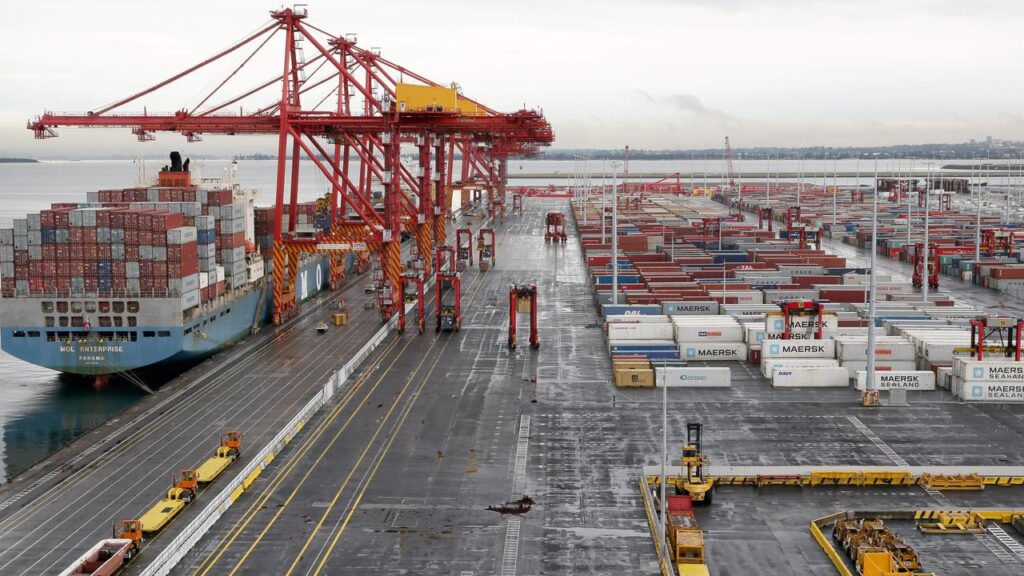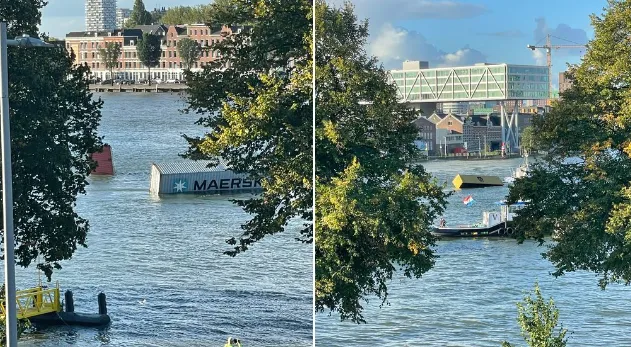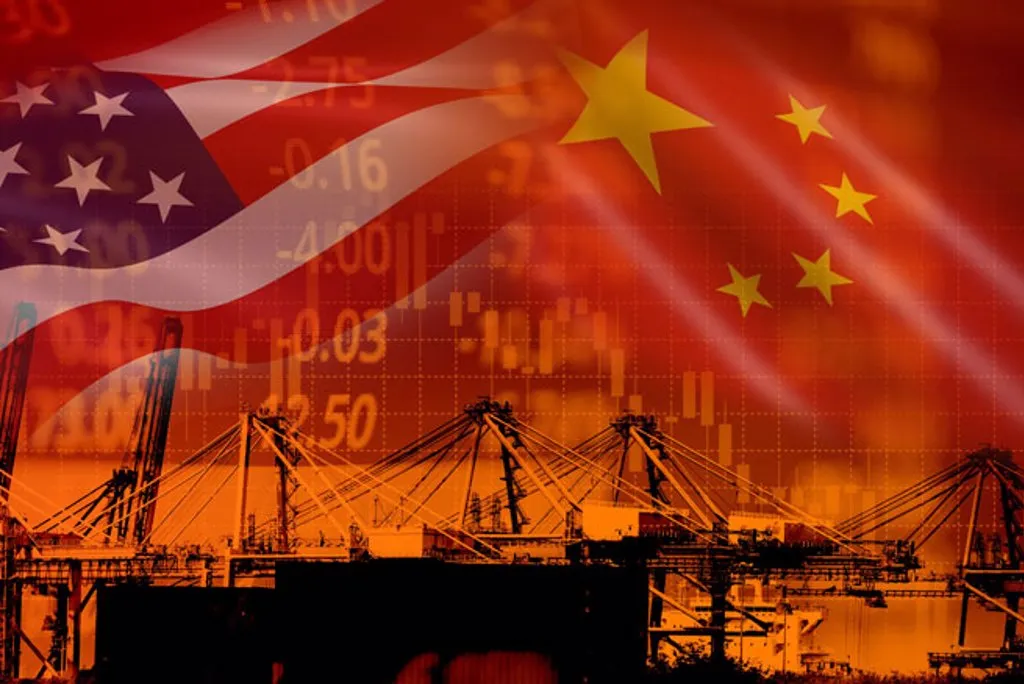Excellence in Ocean Freight from China with Linkway Freight
Linkway Freight provides flexible and integrated ocean freight services to create the most highly adaptable, reliable, and customizable solutions in the industry.
Start to use Linkway Freight today
Partnering with you to simplify and improve your shipping operations with the goal of creating solutions that are efficient and cost-effective.

Quote, Book & Track Your Cargo
What is Sea Freight?
Sea freight, also known as ocean freight, refers to the transportation of goods through sea routes using cargo ships. It is a cost-effective and widely used method for international trade, facilitating the movement of large volumes of goods between countries and continents. Sea freight involves loading cargo into containers, and these containers are then shipped on vessels across oceans to their destination ports. This mode of transportation is particularly suitable for bulky, heavy, or non-perishable goods that do not require rapid delivery. Sea freight plays a crucial role in global logistics and trade, connecting markets and enabling the exchange of goods on a large scale.
Transporting maritime freight can be done in a variety of ways.
- FCL (full container load), in which you purchase one or more full containers to ship.
- LCL, less than container load, is when you may not have enough merchandise to fill an entire container. The contents of the container are separated once more, reaching their destination.
FCL Shipping Fundamentals
FCL stands for full container load, refers to shipping cargo that is large enough to occupy an entire container. This method ensures that the entire container is dedicated to a single consignee, eliminating the need to share space with other importers as in LCL (less than container load). With FCL shipping, the shipper has full control over the container, making it a cost-effective and widely utilized mode of transportation.
- Container Exclusivity:
- FCL shipping means that the entire container is reserved for the cargo of a single shipper or consignee. This exclusivity ensures that the container is not shared with other importers.
- Cargo Volume:
- FCL is suitable for shipments that are large enough to fill a standard shipping container, typically 20 feet (TEU) or 40 feet (TEU) in length. It is cost-effective for transporting substantial quantities of goods.
- Cost Structure:
- The cost of FCL shipping is generally based on the full container, regardless of whether it is fully or partially loaded. While this can be cost-effective for larger shipments, it may be less economical for smaller loads.
- Control and Security:
- Shippers have full control over the container, including the loading and sealing processes. This control enhances the security of the cargo during transit.
- Loading and Unloading Efficiency:
- FCL shipments are generally loaded and sealed at the shipper’s location, making the loading and unloading processes more efficient and reducing the risk of damage to the goods.
- Transit Time:
- FCL shipping often results in faster transit times compared to LCL (Less than Container Load) as there is no need for consolidation and deconsolidation of multiple shipments.
- Documentation:
- Shippers are responsible for preparing the necessary shipping documentation, including the bill of lading, packing list, and commercial invoice.
- Destination Handling:
- At the destination port, the entire container is delivered to the consignee, streamlining the customs clearance process and reducing the overall transit time.
- Container Types:
- FCL shipments can use various container types, including dry containers, refrigerated containers, open-top containers, and flat rack containers, depending on the nature of the cargo.
In summary, FCL shipping is a preferred option for businesses dealing with large quantities of goods requiring dedicated container space. It offers control, efficiency, and security, making it a reliable choice for international cargo transportation.
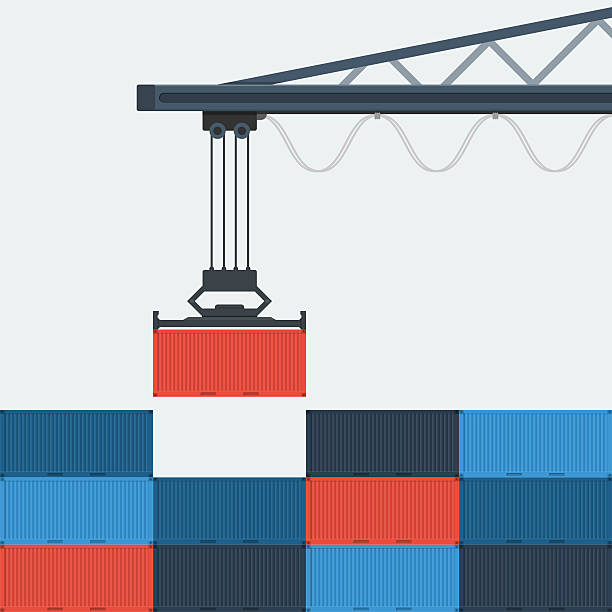
- Start to use Linkway Freight today
- What is Sea Freight?
- FCL Shipping Fundamentals
- LCL Shipping Fundamentals
- Comprehensive Comparison of FCL and LCL Shipping
- Why Ship By Sea Freight?
- How long does sea freight from China take?
- Container Types and Dimensions
- How Many Cartons per Pallet, How Many Pallets per Container?
- FCL Shipping Procedures
- FCL Required Documents
- Loading Ports in China and Best Discharge Ports
- Introduction to Major Shipping Lines?
- Which port do I need to ship ?
- Factors Affecting Shipping Cost & Time
- Learn more about our key freight shipping trade lanes
- You may also like
LCL Shipping Fundamentals
LCL transportation, also known as less than container load shipping, is a critical component of international logistics, particularly when shipping small-volume goods from China to the USA. This method involves consolidating small shipments from various shippers into a shared container, providing a cost-effective solution for businesses purchasing small-volume goods.
- Consolidation and Shipping from China:
- Consolidation plays a pivotal role in LCL shipping, especially when shipping small-volume goods from China to the USA. It optimizes cost efficiency and streamlines the logistics process.
- Cargo Volume and Flexibility:
- LCL is suitable for small batches of goods that don’t fill an entire container, offering flexibility for businesses purchasing small-volume goods. It caters to smaller quantities without the need to commit to a full container load.
- Cost Structure and Affordability:
- The cost of LCL shipping is typically based on the volume or weight of the goods. This cost structure provides an affordable international transportation solution for businesses purchasing small-volume goods.
- Shared Container and Efficient Transit:
- Unlike FCL (Full Container Load), LCL involves multiple shippers sharing space within the same container. This shared container concept is efficient for small to medium-sized shipments, contributing to a streamlined transit process.
- Documentation and Logistics Efficiency:
- Shippers are responsible for providing necessary shipping documentation, including a bill of lading, packing list, and commercial invoice. These documents ensure a smooth logistics process from China to the USA.
- Destination Handling and Deconsolidation:
- At the destination port, LCL shipments undergo a deconsolidation process where goods are separated and delivered to their respective consignees. This efficient handling process enhances the overall logistics experience.
In summary, LCL shipping is a practical option for businesses with smaller shipment volumes, offering cost-effective and flexible solutions for international transportation.
Comprehensive Comparison of FCL and LCL Shipping
1. Cost Efficiency:
- FCL:
- Advantage: Suitable for bulk shipments with cost distribution over a greater quantity, resulting in lower unit costs.
- Disadvantage: Unit costs may be higher for smaller shipments or those unable to fill an entire container.
- LCL:
- Advantage: Cost-effective for small shipments, with shippers paying only for the space their cargo occupies, resulting in economical unit costs.
- Disadvantage: Unit costs may be higher for bulk shipments.
2. Risk of Damage or Loss:
- FCL:
- Advantage: Sealed containers reduce the risk of damage or loss.
- Disadvantage: Movement within the container for smaller shipments may increase the risk of damage.
- LCL:
- Advantage: Multiple shipments in one container may result in a smaller risk of damage or loss compared to FCL.
- Disadvantage: Shared space may increase the risk of damage.
3. Loading Flexibility:
- FCL:
- Advantage: Shippers have more control over loading, providing better protection for the cargo.
- Disadvantage: Loading may be less flexible for smaller shipments.
- LCL:
- Advantage: Allows for various sizes of shipments, offering greater loading flexibility.
- Disadvantage: Shared space may lead to increased risk of damage during loading.
4. Flexibility:
- FCL:
- Advantage: Suitable for large-scale, stable shipments, providing higher flexibility.
- Disadvantage: May lack flexibility for smaller or irregular shipments.
- LCL:
- Advantage: Provides greater flexibility, enabling shippers to send small batches and reduce inventory holding costs.
- Disadvantage: May lack sufficient flexibility for larger shipments.
The choice depends on the nature of the cargo, transportation requirements, cost considerations, and shipment volume. When making decisions, it is essential to consider these factors comprehensively and balance the various advantages and disadvantages to meet specific business needs.
Why Ship By Sea Freight?
Shipping goods by sea is still popular nowadays due to low cost, high sea vessel load capacity, and minimal restrictions on a vessel carrying capacity.
There are a number of reasons why businesses might choose to ship goods by sea, including:
Ocean freight is the most cost-effective way to transport large shipments over long distances.
Sea freight is a reliable mode of transport that is less susceptible to delays than other modes, such as air freight.
Ports are located all over the world, making it easy to find a port near your origin or destination.
Now the shipping company improve the service, transport time is fast. such as from China to USA by fast ship, the transport time is only about 9-12days.
If you are looking for a cost-effective way to transport large shipments overseas, then ocean freight is the best option!
How long does sea freight from China take?
Transportation of goods by water from China to the rest of the world takes the longest.
Despite this, it is the most cost-effective choice.
These tables show the transit times from China to major ports in the United States, Europe, and Asia-Pacific.
How long does sea freight from China to North America take?
| Country | United States | Canada | |||||
|---|---|---|---|---|---|---|---|
| Ocean Port | LA/LB | Oakland | New York | Miami | Houston | Toronto | Montreal |
| Transit Time (Days) | 13-16 | 18 | 33 | 32 | 38 | 35 | 30 |
How long does sea freight from China to Europe take?
Container Types and Dimensions
As you already know, FCL is full container load.
Now it is time to talk about things of container.
Specifically, I will show you 4 container types and dimensions, payload for each type of container.
It’s a very important knowleage you need to master.
With that, you can figure out how many cargo can be loaded and how many containers needed.
Keep reading.
The International Organization for Standardization (ISO) sets the standards for shipping container dimensions.
There are4 kinds of standard containers : 20ft,40ft,40hq,45hc
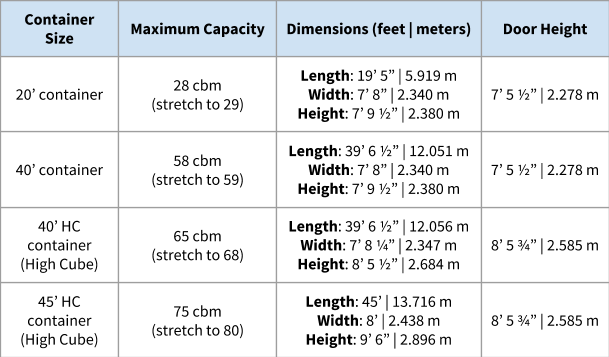
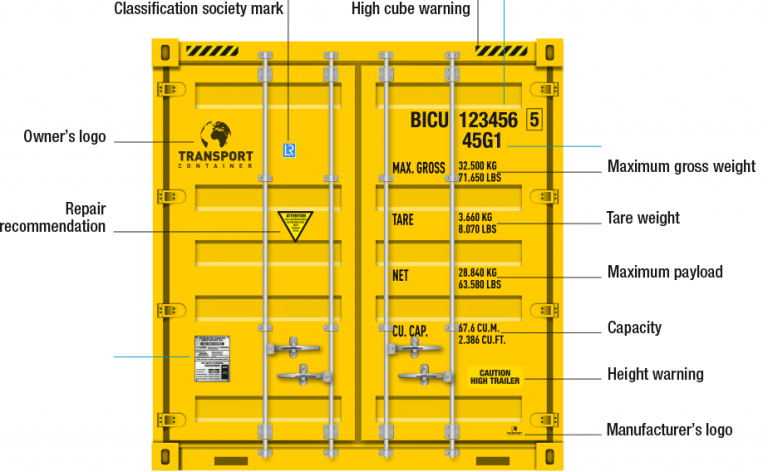
How Many Cartons per Pallet,
How Many Pallets per Container?
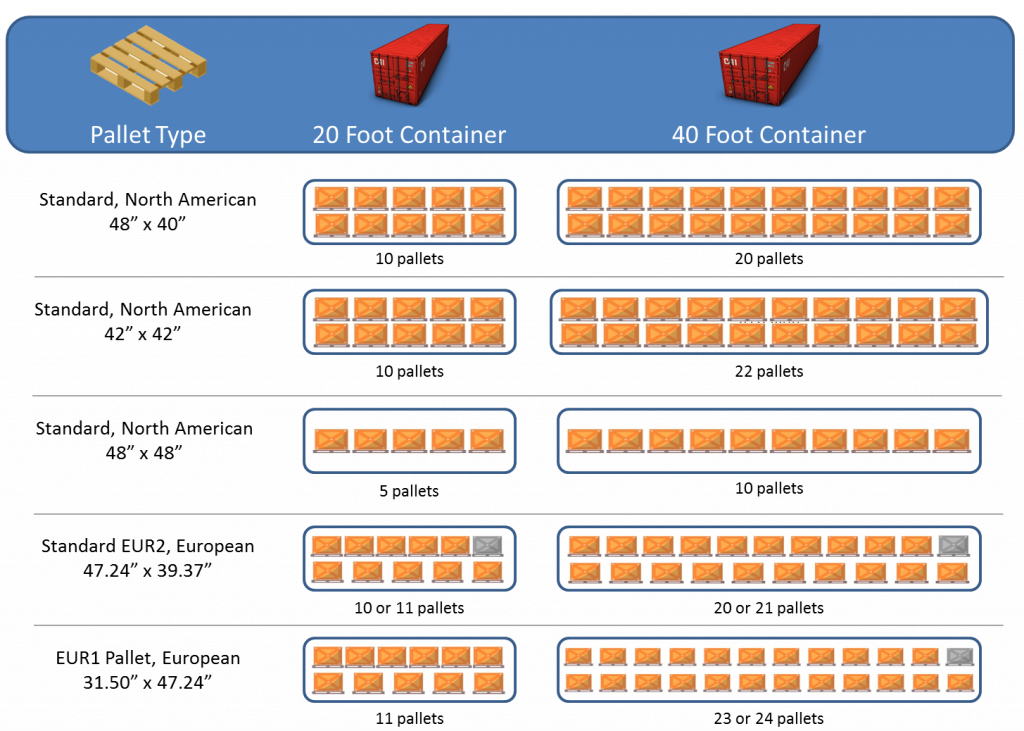
In this example, let’s take the example of industrial pallets: 100 x 120 cm
As a reminder, the weight of a pallet is 30 kilograms
the maximum load per pallet is 1.5 tons
You will be able to load:
9 pallets in a 20 feet container
22 pallets in a 40 feet container
Once you know the size of your cartons, pallets, the container (dimensions), as well as the weight, then you are able to decide what is the most suitable option between FCL and LCL.
Linkway Tips : Now that you know the size of your cartons, the height of the container (an industrial pallet is 16cm high), and the weight of your cartons, you can finally calculate the volume and therefore forecast how many containers or CBM you need.
FCL Shipping Procedures
FCL is the most complicated among all the shipping method.
Good news is it can be easy for you to understand when use the illustration and animation.
Well, how does it work by FCL shipping ? And how to book a FCL shipment ?
Take the step-by-step guide.
How does it work by FCL ?
| Step | Description |
|---|---|
| 1.Loading | After space booked, forwarder sent a container from container yard to shipper factory or warehouse for loading |
| 2.Export Haulage | After container loaded, container sent back to the origin terminal |
| 3.Export Customs | Customs clearance in China with the necessary shipping documentation |
| 4.loading | Container load onboard and wait for release |
| 5.Shipping | The sea transport on sea ( Port to Port ) |
| 6.Unloading | Container will be discharged at destination terminal from vessel after arrival |
| 7.Import Customs | An import declaration is made at the destination container yard. |
| 8.Delivery | After Customs cleared, container will be delivered to consignee designated warehouse or place. |
How to book FCL shipments ?
Import and customs processes are complex.
Mistakes can be costly.
So having a shipping agent involved is an effective way of managing the risks and ensuring the process goes smoothly.
| Step | Description |
|---|---|
| 1.Inquiry | You find and choose a good China forwarder , send them shipment details and request for quotes. |
| 2.Quoting | Based on the freight requests, forwarder provide shipping proposal with time, schedule, price and suggestions. |
| 3.Booking | At this point, what you need to do is :Confirm the quote to your forwarderGive the contact information of the suppliers to your forwarderBill instruction, especially the details of shipper & consignee.Forwarder contact suppliers to make the booking. |
| 4.Export Operation | It’s all about the basic work involved in getting a shipment out of China.Deliver or Picking up the cargo to port or airportCoordinating with supplier for Customs clearancePrepare necessary shipping documents like Packing List, Invoice, C/O, etcCargo consolidation or palleting , labelling etcBuy insurance |
| 5.Shipping | The sea transport on sea ( Port to Port ) |
| 6.Payment | Your forwarder will send you the freight invoice. And then you make the shipping payment based on the amount and bank account. After that , shipment will be released. |
| 7.Tracking | Track your shipment online and get the real-time shipment status. |
| 8.After sale | Shipping will send you the arrive notice ( Just answer the phone or email )After that, you will need to clear the import Customs through your own agent or use forwarder’s door to door service.Later pay the bill for import Customs tax & dutyCoordinate the delivery time to doorMake comments, suggestions or Complains to the service. |
With the fcl proess flow, you now know how fcl works.
Still got questions ? Try FAQ.
FCL Required Documents
Paperwork or documentation is an important part in international shipping.
This chapter is all about shipment documents when using FCL services.
I will show you what documents are necessary , what are optional and when needed.
The key point ? Prepare in time.
| Documents | Description | Who Need | Who Provide | Necessity |
|---|---|---|---|---|
| Bill of Lading | The most important documentIdentifies the shipper, consignee, and the types and quantity of the goods. | Destination Customs authorities and Customs broker | Shipping Line ( MBL ) Forwarder ( HBL ) | Necessary |
| Packing List | Identifies items, quantities, and includes the net and gross weight and dimensions of the packages . | Destination Customs authorities and Customs broker | * Your Chinese Supplier * Yourself if you are a middle man ( Use your own doc for blind shipping ) * Us forwarder ( Value added service especially for cargo consolidation ) | Necessary |
| Commercial Invoice | Lists the value of each item as well as the total value of the shipment. | Destination Customs authorities and Customs broker. | Same as Packing List | Necessary |
| Certificate of Origin | used to declare which country the shipment originated in. | Destination Customs authorities and Customs broker. | * Your Chinese Supplier * Or Your forwarder | OptionalBut recommended to reduce the import tariff |
| Insurance Policy | cover the loss of or damage to the cargo during transit. | You or final consignee | Your forwarder | OptionalBut recommended if the cargo value is high |
Other documents may be required depending on the cargo itself and destination country.
Including :
- Dangersours Cargo ( MSDS , UN38.3, DGM, Chemical test report )
- Product certicate ( CCC, FDA, CE,etc )
- Invoice authentication ( Egypt )
- Form M ( Nigeria )
- Fumigation certificate for wooden packing to certain coutries like AU, US, etc

Loading Ports in China and Best Discharge Ports
The top 8 Chinese ports in terms of traffic are located on the east coast of the country, from Shenzhen to Dalian in the northern part.
The only port that is located in the inland areas of the country is Guangzhou, at the confluence of three main Chinese rivers.
Top 10 loading ports in China
Among the world’s top 10 ports in 2022, 7 of them are located in China.
No matter where your Chinese supplier located, your goods are never too far from one of the world’s largest and most productive ports.
You don’t have to pay much attention on the geographical location of your potential vendors in China.
But knowing a bit can help figure out the best POL ( Port of Loading ).
Top 10 ports in China
| Ocean Port | Volume 2022 (Million TEU) | Rank – China | Rank – Worldwide |
|---|---|---|---|
| Shanghai | 47.3 | 1 | 1 |
| Ningbo | 33.35 | 2 | 3 |
| Shenzhen | 30.04 | 3 | 4 |
| Qingdao | 25.67 | 4 | 5 |
| Guangzhou | 24.86 | 5 | 6 |
| Tianjin | 21.02 | 6 | 8 |
| Hong Kong | 16.64 | 7 | 10 |
| Xiamen | 12.43 | 8 | 15 |
| Kaohsiung | 9.49 | 9 | 18 |
| Suzhou | 9.08 | 10 | 19 |

Introduction to Major Shipping Lines?
People always ask where is my cargo.
Tracking is one of the most important part in shipping process.
First, you need to know the shipping line name and tracking website
| CARRIER NAME | COUNTRY | TRACKING WEBSITE | |
|---|---|---|---|
| COSCO | China | https://elines.coscoshipping.com/ebusiness/cargoTracking | |
| OOCL | China | https://www.oocl.com | |
| CMA CGM | France | https://www.cma-cgm.com/ebusiness/tracking | |
| Maersk Line (MSK) | Denmark | https://www.maersk.com/tracking/ | |
| Matson | USA | https://www.matson.com/shipment-tracking.html | |
| Evergreen | China Taiwan | https://www.shipmentlink.com/servlet | |
| Hamburg Sud | Germany | https://www.hamburgsud-line.com | |
| Hapag-Lloyd (HPL) | Germany | https://www.hapag-lloyd.com/en/online-business | |
| Hyundai (HMM) | Korea | https://www.hmm21.com | |
| KMTC | Korea | http://www.ekmtc.com/ | |
| Mediterranean Shipping (MSC) | Switzerland | https://www.msc.com/track-a-shipment | |
| ONE | Japan | https://ecomm.one-line.com/ecom/CUP_HOM_3301.do | |
| WANHAI | China Taiwan | https://www.wanhai.com | |
| YML | China Taiwan | https://www.yangming.com/e-service | |
| ZIM | Israel | https://www.zim.com/tools/track-a-shipment | |
Which port do I need to ship ?
There are two criterias we normally use :
Choose the closest port for main cargo.
Suppose you have two suppliers, one in Ningbo with 2 CBM, another in Shenzhen with 15 CBM.
Then the best way to consolidate the container is to deliver the goods in Ningbo to Shenzhen, load and ship the container from Shenzhen.
Don’t wrongly ship from Ningbo. The inland trucking delivery could be costly.
Choose the main ports.
Taking one case in 2020,
A USA client need 9 x 40 HQ to Los Angeles, factory is Guangzhou..
Despite there are barge service from Guangzhou directly , we book the container from Shenzhen.
Why ?
Main airports means more shipping companies with different routes, schedules and costs.
In short, more choice for you.
Factors Affecting Shipping Cost & Time
A Chinese, American or European festival, for instance, may have a major effect on prices and timelines due to its effect on logistics.
Freight shipments are usually fully booked days in advance due to lengthy vacation periods during important Chinese festivals.
The cost of shipping has increased as a result of the strong demand.
We’ve discovered that it’s preferable to schedule your cargo delivery as far in advance as you can during the Chinese New Year.
You’ll have to endure a protracted delivery delay if you don’t.
As a result, we provide you this knowledge to help you understand the fundamentals of this market based on our extensive experience controlling shipping time from China.
CARGO SHIP ROUTES
Learn more about our key freight shipping trade lanes
Sea and air freight services from:



